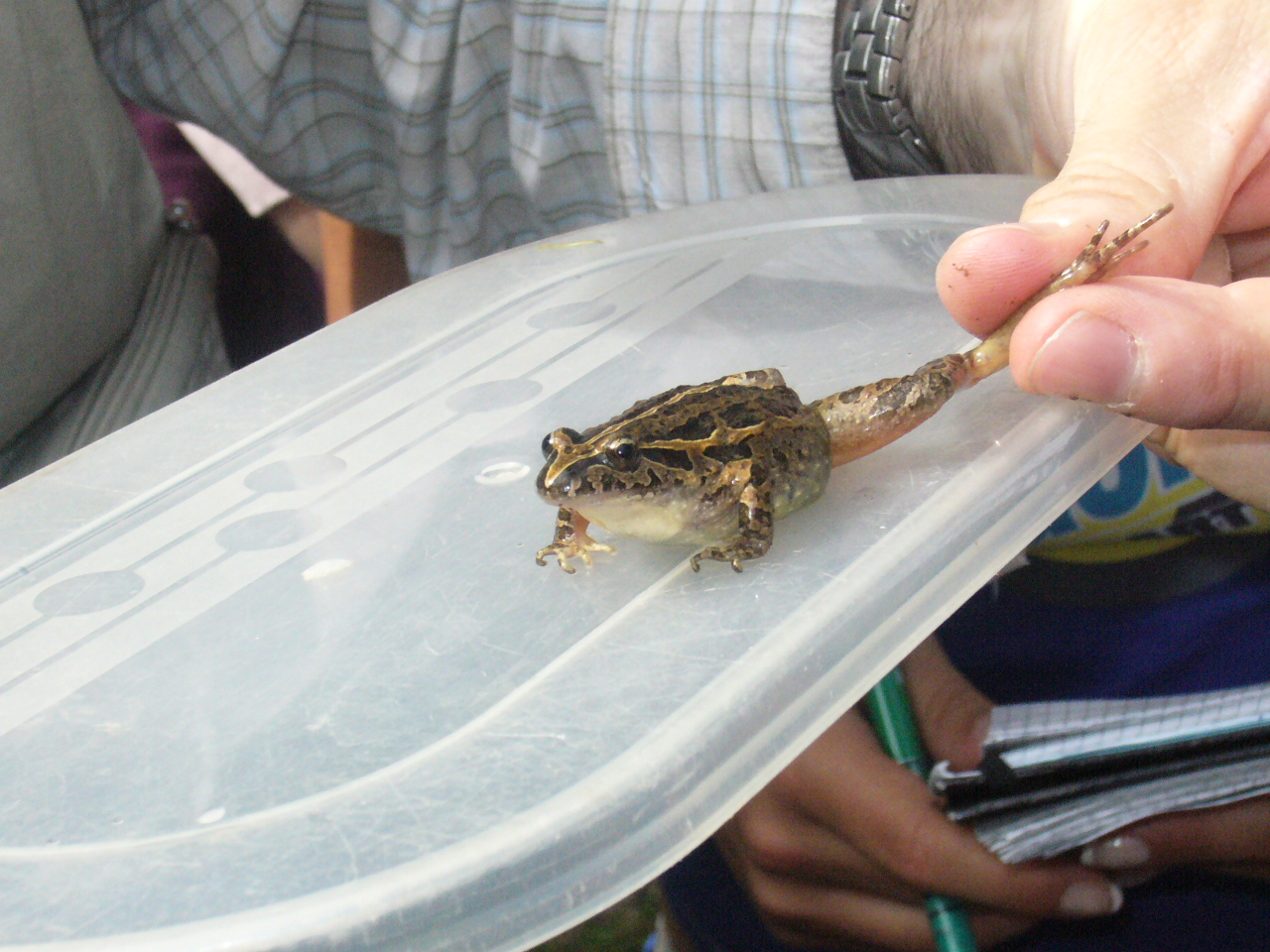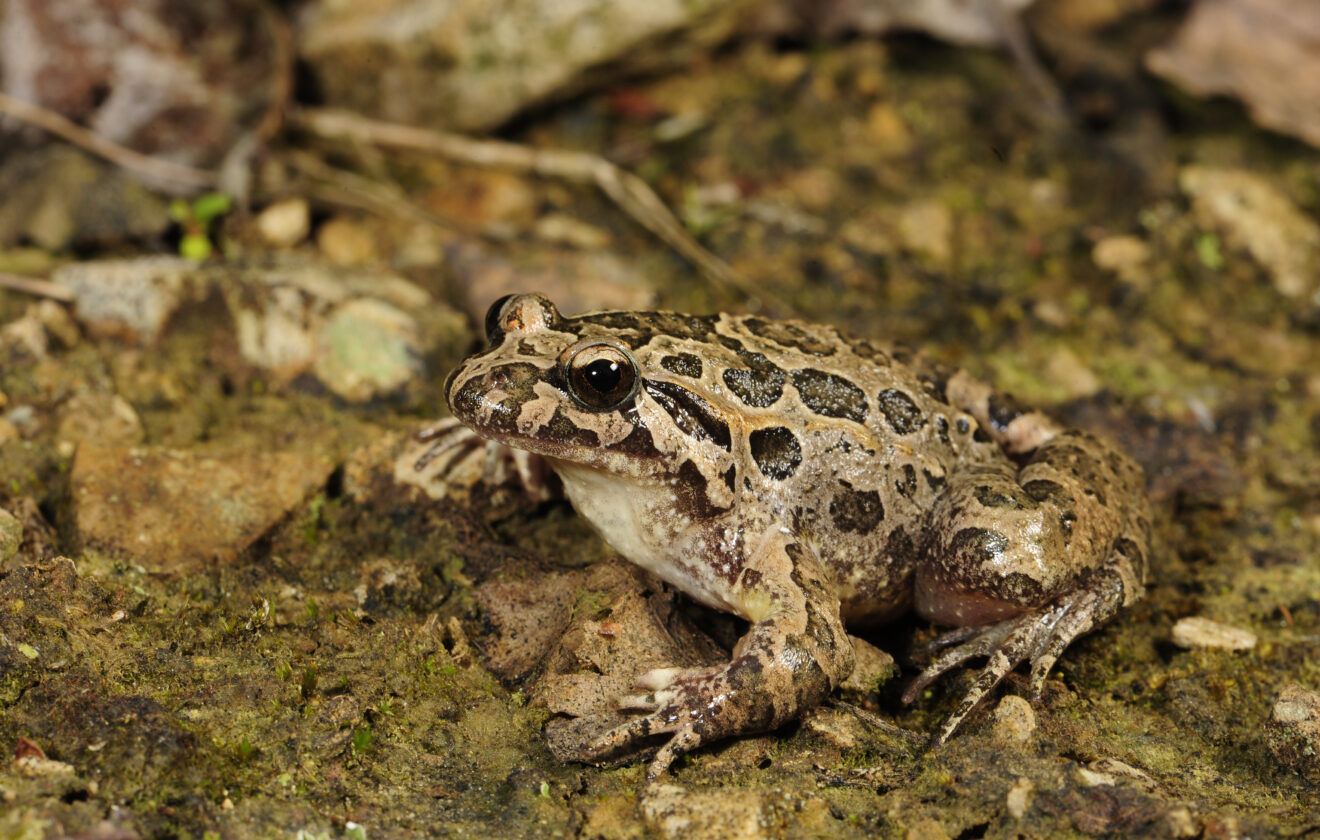The Iberian Painted Frog (Discoglossus galganoi): Secrets of an Ancient Amphibian#
Introduction#
In the clear and tranquil streams of southwest Europe, hidden amongst leaf litter and moss-covered stones, lives an ancient inhabitant: the Iberian painted frog (Discoglossus galganoi). Quiet, elusive, and sometimes overlooked, this remarkable amphibian carries with it not only splendidly subtle beauty but also evolutionary secrets that stretch back millions of years.
Known to scientists as Discoglossus galganoi, this species belongs to a small, fascinating lineage of frogs whose ancestry predates many of their better-known amphibian cousins. Despite its understated appearance, the Iberian painted frog holds biological clues that provide insights into amphibian evolution and ecological health—making it an essential part of Europe’s natural heritage.
Taxonomy and Classification#
The Iberian painted frog is classified within the family Alytidae, a family of ancient amphibians that includes midwife toads and painted frogs. Within the genus Discoglossus, several sister species thrive in distinct, often geographically limited locations. Discoglossus galganoi itself was once considered a subspecies, but recent genetic studies now recognize it as a distinct species due to its specific genetic, morphological, and ecological attributes.
Its closest relatives include Discoglossus pictus and Discoglossus jeanneae, two frogs each adapted to their unique Mediterranean habitats. While sharing similarities, Discoglossus galganoi thrives distinctly in the Iberian Peninsula’s deciduous woodlands, freshwater streams, and damp meadows, clearly differentiating it from its cousins.
Natural Habitat#
Discoglossus galganoi is native almost exclusively to the Iberian Peninsula, inhabiting regions across Portugal and Spain. Its distribution extends from the Atlantic coastal woodlands and moist valleys to inland mountainous terrain, typically thriving wherever there is abundant freshwater. Within these regions, painted frogs favor habitats that provide both protection and moisture—two essentials for amphibian life.
The Hidden Realm of Moss and Stone#
Stepping into its natural habitat is like entering a serene, shaded world governed by dampness and gentle, dappled sunlight. Stream banks shaded by willows and alders offer perfect hideaways. Mossy stones, leaf litter, and underbrush provide them cover, moisture, and food. It’s in these secluded environments, shielded from predators and harsh environmental fluctuations, that the Iberian painted frogs quietly prosper.
Their preference for pristine freshwater bodies makes them sensitive indicators of environmental health. Stream disturbances, pollution, or agricultural runoff significantly impact their numbers, giving us early signals of broader ecological issues that often remain unnoticed.
Physical Characteristics#
Featuring subtle yet striking coloration, Discoglossus galganoi measures about 5-7 centimeters in adult length and is considered medium-sized among European frogs. Its smooth skin, punctuated by irregular patches and markings, resembles an artist’s casually splattered palette, hence the common name “painted frog.”
An Artist’s Amphibian: Detailed Coloration and Markings#
The dorsal coloration of Discoglossus galganoi ranges notably from light olive-brown to marbled dark shades, interwoven with patterns of cream, rust, and occasionally bronze-colored blotches. Each individual’s patterning is unique, almost like fingerprints, allowing keen-eyed naturalists to distinguish individuals within a population.
Beneath the mottled mosaic of colors, the skin is smooth but slightly granular, providing camouflage among leaf litter and rocky streambeds. The eyes, large and positioned prominently, display golden irises flecked with dark black horizontal pupils, specialized for spotting movement in the dim, aqueous habitats they prefer.
Adaptions for Survival#
Their cryptic coloration is not simply aesthetic, but a vital survival mechanism. The intricate camouflage makes them nearly invisible against wet leaf litter, smooth stones, and vegetation, protecting them from visual predators like snakes, birds, and mammals.
Their sturdy hind limbs and reduced webbing between toes equip them equally for terrestrial and aquatic environments, allowing agility both underwater and on land. Such versatile adaptations enable Discoglossus galganoi to exploit various ecological niches within its range expertly.
Behavior and Life Cycle#
The Iberian painted frog leads a secretive, primarily nocturnal existence. During the daylight hours, they remain carefully hidden beneath forest debris or on streambeds, becoming quietly active after sunset in search of prey. Their diet comprises mainly insects, arachnids, small invertebrates, and crustaceans, often showcasing remarkable speed and accuracy in capturing prey, aided by their excellent night vision.
A Symphony of Calls: Courtship and Reproduction#
During the damp, cool nights of spring and early autumn, male Discoglossus galganoi call softly yet persistently from shallow water bodies. Their vocalizations—soft “croaks” and faint guttural notes—not as loud or musical as some frogs, but provide effective communication during the short breeding season.
Females select males based on these calls, gravitating toward shallow pools or well-protected stream inlets where mating occurs. Shortly after pairing, female frogs deposit compact clusters of eggs attached to submerged vegetation, stones, or roots. Tadpoles hatch within days and begin swimming actively, rapidly adapting to their aquatic environment.
For several weeks, the tadpoles feed actively, scraping algae and microbes from rocks or leaf matter. Eventually, metamorphosis occurs: tiny legs emerge, lungs develop, and soon a miniature painted frog emerges from the water, ready to explore new territories and contribute to the continuation of their secret society.
Ecological Role#
Discoglossus galganoi plays a subtle yet essential role in maintaining ecological balance. By consuming vast quantities of insects, including mosquitoes, flies, and agricultural pests, they aid in natural pest control, indirectly benefiting agriculture and human health alike.
Simultaneously, they are integral prey items for predatory birds, mammals, fish, and reptiles within their habitats. Their presence represents ecological harmony, signaling the pristine conditions necessary to support delicate amphibian populations. When their numbers decline, alarmingly, entire ecosystems often follow suit.
Threats and Conservation Status#
Currently classified as Near Threatened by the International Union for Conservation of Nature (IUCN), Discoglossus galganoi faces increasing pressures from human activities. Habitat loss, matter-of-factly the most pressing threat, arises primarily due to urban sprawl, agricultural expansion, deforestation, wetland drainage, and water pollution.
The Perils of Fragmentation and Pollution#
The restricted, specialized habitats of this amphibian mean even small disturbances have pronounced effects. Agricultural pesticides and herbicides pollute watersheds, negatively impacting tadpole growth, reproduction success, and adult longevity. Climate change exacerbates existing habitat stress by altering precipitation patterns and transforming the moist environments critical to their life cycle into dry, inhospitable terrains.
Local conservation initiatives prioritize habitat protection, water-quality monitoring, and public awareness campaigns. Scientists and ecologists continually call attention to this frog as an ecological indicator, spotlighting Discoglossus galganoi as both a symbol of habitat integrity and a threatened ambassador for amphibian conservation.
Cultural and Scientific Significance#
Though seldom celebrated in mainstream culture, the Iberian painted frog serves as a treasured flagship for conservation educators and scientists. It embodies the fragile beauty and complexity of European ecosystems, reflecting intertwined relationships between habitats, biodiversity, and human activity impact.
Scientifically, Discoglossus galganoi has provided critical insights into the fundamental evolutionary pathways of amphibians. Genetic studies on this species have illuminated ancient connections and divergences dating back tens of millions of years, reminding us of the extraordinary lineage harbored in our own regional backyards.
Conclusion#
In shimmering moonlit streams and beneath forest debris quietly waits Discoglossus galganoi—an ancient amphibian fascinating not only by its charming appearance but through its critical ecological role and evolutionary significance. Protecting this species means safeguarding entire ecosystems that support human and wildlife alike.
We must champion conservation efforts to ensure future generations might also be captivated by this quiet, unassuming resident of Europe’s vibrant natural heritage. To protect the Iberian painted frog is to honor nature itself, in all its delicate beauty, mystery, and resilience.
















